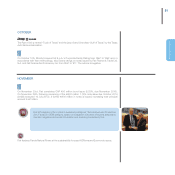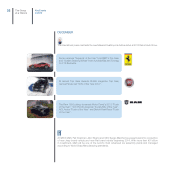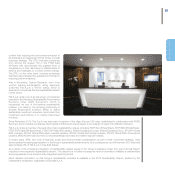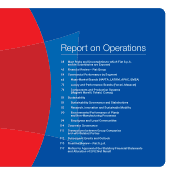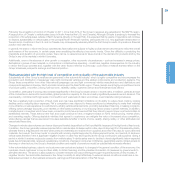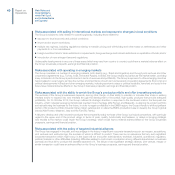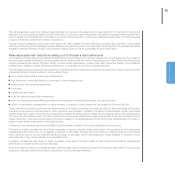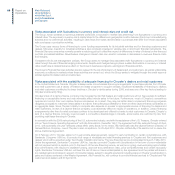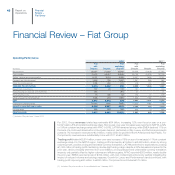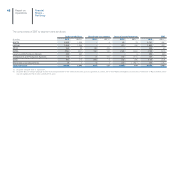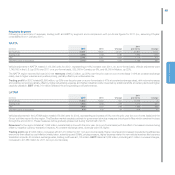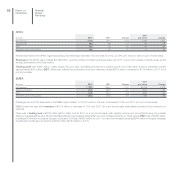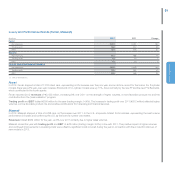Chrysler 2012 Annual Report Download - page 42
Download and view the complete annual report
Please find page 42 of the 2012 Chrysler annual report below. You can navigate through the pages in the report by either clicking on the pages listed below, or by using the keyword search tool below to find specific information within the annual report.
41
Report on Operations
Risk associated with the integration with Chrysler
The acquisition of a controlling interest in Chrysler and the related integration of the two businesses is intended to provide both Fiat
and Chrysler with a number of long-term benefits, including sharing new vehicle platforms and powertrain technologies, as well as
procurement benefits, management services and global distribution opportunities. The integration is also intended to facilitate both
parties’ penetration in several international markets where the companies’ products would be attractive to consumers, but where one
of the parties does not have significant market penetration.
The ability to realize the benefits of the integration is critical for Fiat and Chrysler to compete with their competitors. If the parties are
unable to convert the opportunities presented by the integration into long-term commercial benefits, either by improving sales of
vehicles and service parts, reducing costs or both, the Group’s financial condition and results of operations may be materially adversely
affected.
As a result, any adverse development for Chrysler and the related integration could have a material adverse effect on the Group’s
business prospects, financial condition and results of operations. Therefore, if the integration does not bring the intended benefits or
changes in circumstances at Fiat or Chrysler occur, there may be a material adverse effect on the Group’s business prospects, financial
condition and results of operations.
Risks associated with relationships with employees and suppliers
In many countries where the Group operates, Group employees are protected by various laws and/or collective labor agreements
that guarantee them, through local and national representatives, the right of consultation on specific matters, including downsizing
or closure of production units and reductions in personnel. The laws and/or collective labor agreements applicable to the Group
could impair its flexibility in reshaping and strategically repositioning its business activities. The Group’s ability to reduce personnel or
implement other permanent or temporary redundancy measures may be subject to government approvals and the agreement of the
labor unions. Industrial action by employees could have an adverse impact on the Group’s business activities.
Furthermore, the Group purchases raw materials and components from a large number of suppliers and relies on services and products
provided by companies outside the Group. Some of these companies are highly unionized. Close collaboration between a manufacturer
and its suppliers is common in the industries in which the Group operates and although this offers economic benefits in terms of cost
reduction, it also means that the Group is reliant on its suppliers and is exposed to the possibility that difficulties, including those of a
financial nature, experienced by those suppliers (whether caused by internal or external factors) could have a material adverse effect on
the Group’s business prospects, earnings and financial position.
Risk associated with increase in costs, disruption of supply or shortage of raw materials
Fiat uses a variety of raw materials in its business including steel, aluminum, lead, resin and copper, and precious metals such as
platinum, palladium, rhodium and energy. The prices for these raw materials fluctuate and at times in recent periods, these commodity
prices have increased significantly in response to changing market conditions. Fiat seeks to manage this exposure, but substantial
increases in the prices for raw materials would increase the Group’s operating costs and could reduce profitability if the increased costs
cannot be offset by changes in vehicle prices. In addition, certain raw materials are sourced only from a limited number of suppliers and
from a limited number of countries. The Group cannot guarantee that it will be able to maintain arrangements with these suppliers that
assure access to these raw materials, and in some cases this access may be affected by factors outside the Group’s control and the
control of its suppliers. For instance, the earthquake and tsunami in Japan in 2011 negatively affected commodity markets, and any
similar event may have severe and unpredictable effects on the price of certain raw materials in the future. As with raw materials, the
Group is also at risk for supply disruption and shortages in parts and components for use in its vehicles.
Any interruption in the supply or any increase in the cost of raw materials, parts and components could negatively impact the Group’s
ability to achieve growth in vehicle sales and improved profitability.


